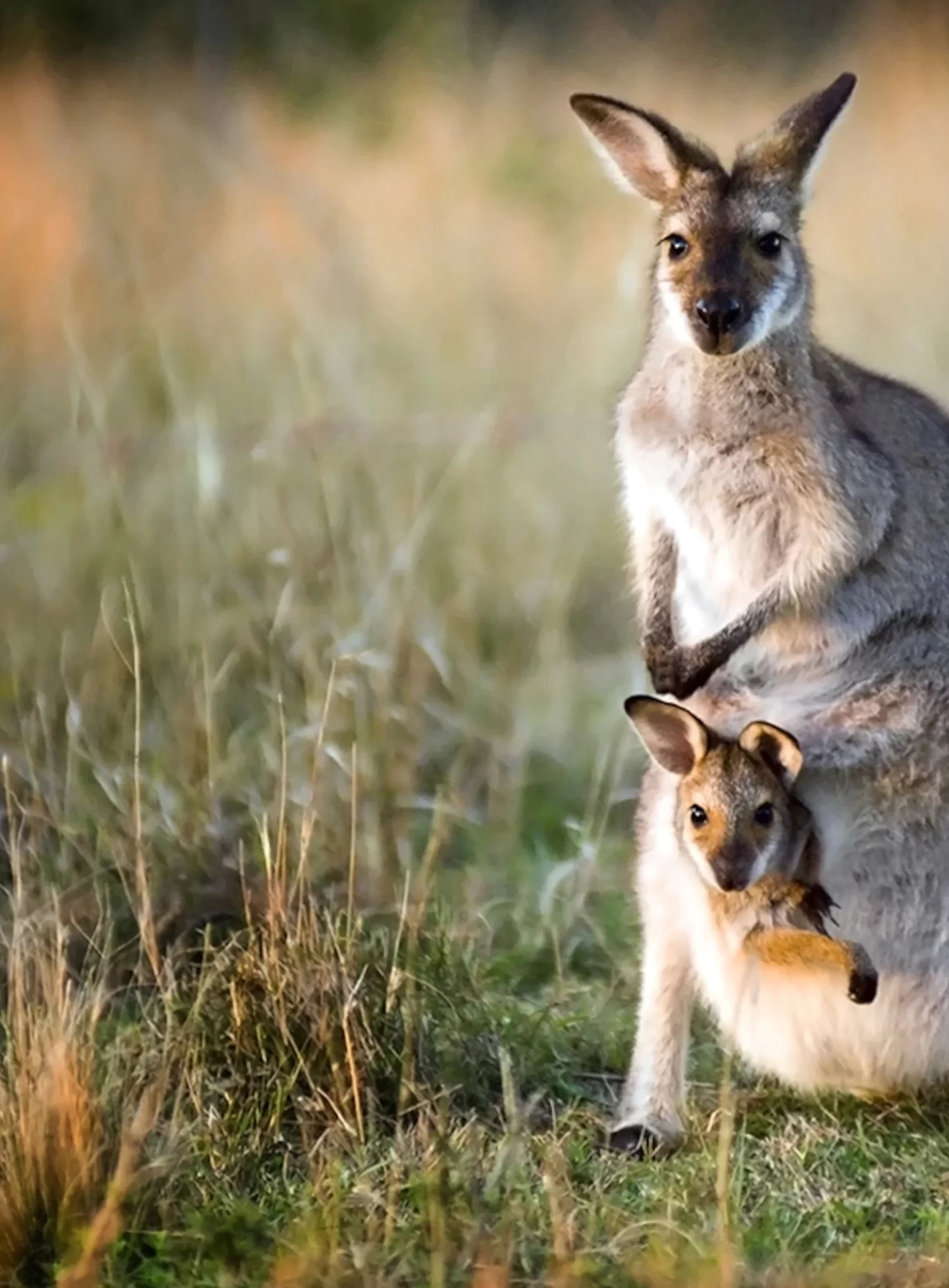

I rise to speak on the motion of the Hon. Tammy Franks today regarding kangaroos. Whilst I can understand the sentiments of this motion, it is unfortunately not one that I can support.
The kangaroo is a much-loved national animal, an icon of Australia, and is an important part of our natural ecosystem. Australians have had a long tradition of living off the land. Indigenous communities have been hunting kangaroos for food for centuries. It is our responsibility to do this in a sustainable way and in a way that protects our native species and the broader natural environment, as well as in a way that supports our economy.
As a veterinarian in a rural practice, I have studied the biology of the kangaroo and have treated many kangaroos in my professional career. What I can tell you is that a kangaroo’s reproductive system copes very well in drought. In fact, most members of the kangaroo family have an adaptation called embryonic diapause. This enables them to recover from drought and make use of ideal conditions as they occur.
After mating, an embryo develops until it consists of around a hundred cells, then develops no further until the pouch is vacant. During prolonged drought, a female’s milk will dry up and if the pouch young dies an embryo is already present in the womb. Shortly after environmental conditions improve, females can give birth. The advantage to this is that mum can replace a joey very quickly if she loses one.
So a female kangaroo can have three young at varying stages of development at one time: a joey at foot, a pouched young and a dormant embryo in the uterus. So I do not agree with the assertion from the Hon. Ms Franks that kangaroos can have one baby a year. Kangaroos can breed all year round, but most births occur between April and June. A single joey remains in the pouch for about six months, when it will then start to move in and out of the pouch, and is weaned after about eight months for red kangaroos and 11 months for grey kangaroos.
In fact, these animals are quite remarkable in their reproductive behaviours. Females come into oestrus, are mated and conceive within 24 hours of giving birth. Consequently, they are normally pregnant for 364 days of the year, but not with the same foetus, and, as I have stated previously, female kangaroos are able to suckle two joeys simultaneously—one in the pouch and one outside—as well as having an egg ready for implantation.
Leaving reproduction aside, we need to understand the issues that face our kangaroo population. The Kangaroo Management Taskforce in New South Wales and the Kangaroo Management Reference Group right here in South Australia are two groups that have done just that. These groups include representatives from the animal welfare sector—such as the RSPCA, Aboriginal custodians, industry, farmers, scientists, local land services and veterinarians—on the board, who are moving towards a better animal welfare outcome for kangaroos.
They have identified three issues: (1) kangaroo populations become overabundant after good seasons; (2) overpopulation of kangaroos leads to overgrazing, damages landscapes and accelerates the onset of drought; and (3) during prolonged droughts, numerous kangaroos die from starvation, thirst, disease and roadkill.
They have also identified opportunities arising from these issues, including improving welfare outcomes for kangaroo populations; integrated management programs; creating opportunities for sustainable regional employment, particularly for Aboriginal communities; providing sustainable, healthy protein for a growing global population; and better planning, collaboration, research and information sharing.
These groups have a number of strategic goals for the delivery of these outcomes or opportunities, and these goals are incredibly important. These goals include achieving healthy, viable populations of the four commercial species of kangaroos without the extreme population fluctuations that impact landscape management and large numbers of kangaroo deaths during drought.
These groups are looking for healthy, well-managed and resilient landscapes with biodiverse and biosecure ecological systems and they are extremely keen to see a healthy, viable commercial kangaroo industry with well-developed markets, both in Australia and overseas, endorsed by all levels of government because they understand that the commercial kangaroo industry is part of the solution to improving welfare outcomes for kangaroo populations.
Those in the commercial kangaroo industry know that animal welfare is a priority and that commercial harvesters must follow the national code of practice for the humane treatment of kangaroos. Commercial kangaroo harvesting is independently monitored and checked at every step to ensure standards are upheld. Mandatory licensing and tagging systems mean that every kangaroo harvested for the commercial industry can be individually traced back to the paddock.
The industry adheres to Australia’s tough food safety standards and those of its export markets. This includes requirements around the harvester vehicle hygiene and refrigeration times. The meat undergoes third-party food safety inspections and NATA accredited testing before being passed fit for human consumption.
Are kangaroos at risk of being threatened species or becoming extinct due to commercial harvesting? The answer to that question is no, and this is how I know. The commercial kangaroo industry is only permitted to harvest species which are not threatened and which are abundant. State governments measure the populations of these species and set annual harvest quotas at about 15 per cent of the total number in harvest zones. These are adjusted in changing conditions such as severe drought. Therefore the actual number of kangaroos harvested each year has been closer to 3 to 7 per cent in the last decade.
Kangaroo numbers have been managed in Australia to ensure their survival. As their populations fluctuate in different conditions they compete with each other and other animals for food and put stress on agricultural land. Without a commercial harvest, kangaroos would still be kept at sustainable levels through government and non-commercial culling, which would result in poorer animal welfare outcomes. Commercial harvesting is considered a humane way to manage kangaroo numbers.
Do not just take my word for it. As recently as two weeks ago, there have been urgent calls from wildlife experts from universities around Australia that current strategies on curbing kangaroo numbers are not working and that we need to expand the kangaroo industry. This united scientific front came in a special November addition of the scientific journal Ecological Management & Restoration. Scientists along with landholders and public land managers describe the impacts of millions of kangaroos dying in dry times because their populations had not been managed sustainably or ethically.
These wildlife scientists want scientifically informed reforms to the nation’s current approach to kangaroo control to limit the waste, degradation and suffering that results from ineffective and sometimes counterproductive policies. The scientists continually refer to the overabundance of kangaroos and wallabies in Australia which results in environmental damage and their starvation. Ecologist Dr John Read from the University of Adelaide said:
We were bombarded with case studies where overabundant kangaroos represented the main threat to revegetation and conservation programs, including examples where unchecked increases threatened the survival of wildlife species, including the macropods themselves.
These scientists also describe new ways to manage kangaroo numbers. Associate Professor Graeme Coulson from the University of Melbourne said fertility treatment can work in localised cases ‘but in many cases lethal control is required’. Dr Jim Radford from La Trobe University said harvesting kangaroos as a resource ‘is preferable to either treating them as pests or ignoring their plight altogether’.
Australian National University Professor George Wilson and other macropod experts from around Australia have penned a joint statement calling for a national overhaul of the strategies used to manage kangaroos and wallabies that are prone to overpopulation throughout much of Australia, where their main predators, such as dingoes, are controlled.
This statement has been endorsed by 25 ecological, conservation, animal welfare and Aboriginal agencies. Professor George Wilson said a stronger kangaroo industry could also bolster the national economy and provide jobs for regional and rural communities. Currently, the commercial industry employs more than 3,000 people across the country, predominantly from rural and remote areas, and supports local farmers.
In conclusion, I am not anti-kangaroo. In fact, I love our animal emblem, but what we all need to understand is that since the inception of European farming systems in this country we have upset the balance, and we have upset the balance in favour of kangaroos. We have put in a lot more watering points and cropping and pasture improvements and in doing so we have enabled them to thrive and become overabundant, which in itself leads to animal welfare and conservation management issues, such as starvation, thirst during drought, disease, vegetation loss and landscape damage.
So we need to manage their numbers in a sustainable manner and look at kangaroos as an asset, rather than as pests, which is what the commercial kangaroo industry does for us not just in South Australia but throughout our nation.

Subscribe and stay in touch with Nicola and the Legislative Council.
Type on the line above then press the Enter/Return key to submit a new search query.